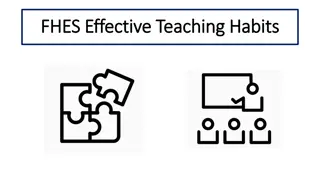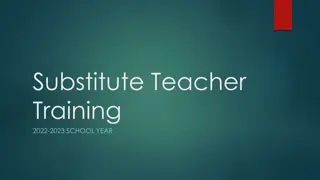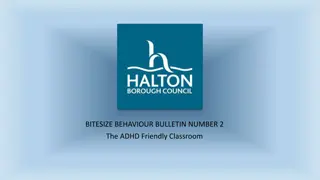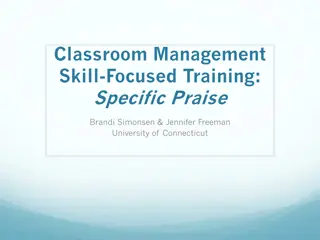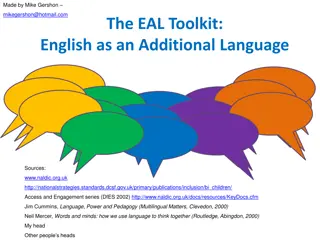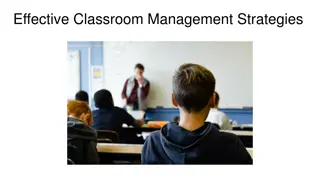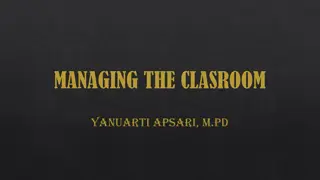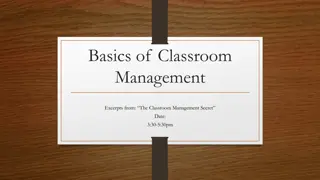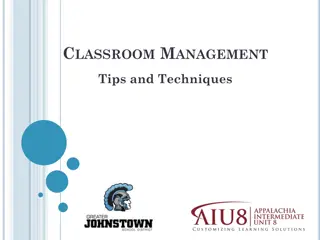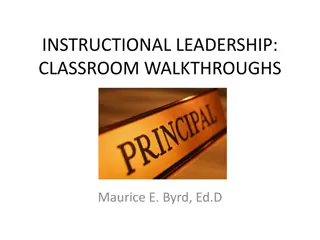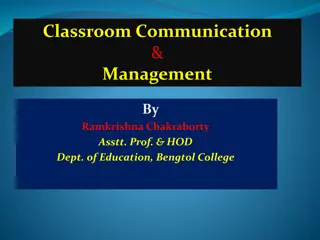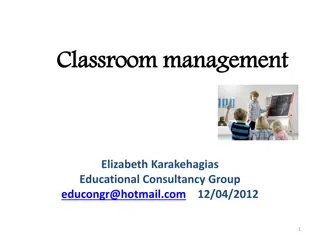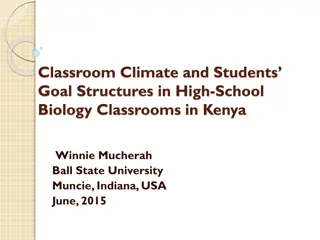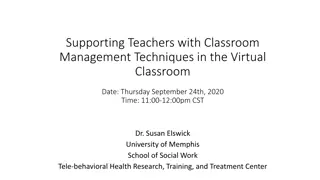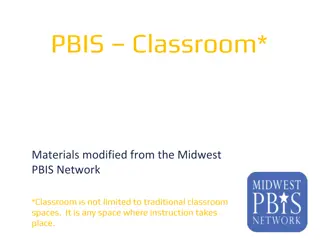Effective Classroom Management Strategies
Learn about effective classroom management strategies from renowned educators Harry Wong and Fred Jones. Explore key components such as classroom structure, limit setting, responsibility training, and backup systems. Discover the teacher's role in instructional strategies, procedures, routines, and discipline. Gain insights on creating a structured classroom, utilizing room arrangement and time management. Understand the importance of movement, proximity to students, and working the crowd to enhance classroom control and student engagement.
Download Presentation

Please find below an Image/Link to download the presentation.
The content on the website is provided AS IS for your information and personal use only. It may not be sold, licensed, or shared on other websites without obtaining consent from the author.If you encounter any issues during the download, it is possible that the publisher has removed the file from their server.
You are allowed to download the files provided on this website for personal or commercial use, subject to the condition that they are used lawfully. All files are the property of their respective owners.
The content on the website is provided AS IS for your information and personal use only. It may not be sold, licensed, or shared on other websites without obtaining consent from the author.
E N D
Presentation Transcript
Classroom Management Harry Wong Fred Jones
Layer Cake Approach --Fred Jones There are four components to Jones classroom management: Classroom Structure Limit Setting Responsibility Training Backup Systems 1. 2. 3. 4.
Classroom Management Harry Wong Teacher s Role Instructional Strategies Procedures & Routines Discipline
Both quote Julia Thompson on the Ideal Teacher: Enjoys students. Uses different teaching techniques. Has a great sense of humor. Acts like an adult and not a child (or high school student). Keeps promises. Is organized. Knows the subject matter. Admits when he or she is wrong. Uses a pleasant voice. Is enthusiastic about the subject. Is willing to listen to both sides of an issue. Has a reputation for giving challenging work. Isn t a pushover. Keeps misbehaving students in line. Keeps everyone busy. Does not have favorites. Is polite to everyone all of the time. Is friendly and fair. According to Julia G. Thompson, author of Discipline Survival Kit for the Secondary Teacher
Wong on Effective Instruction A structured and instructionally sound classroom will eliminate a majority of misbehaviors. Two important key factors are: Room arrangement Time management
Wong - Movement is the key Be able to have quick access to any student at any time. Be comfortable moving around your room during instructional periods. Being in close proximity to a student is an effective deterrent.
Jones - Working the Crowd Natural teachers spend less time in front of the class teaching and more time circulating the room while students are working. Physical proximity of the teacher is a powerful factor that lessens the chances of students misbehaving.
Both agree that Room Arrangement helps discipline Assigned seating. Loop-type set up so the teacher can around tosee everyone s work. Broad walkways- make it easier for a teacher to get from one student to another. Remove furniture barriers between teacher and students. Students desks are near the board for easy conversation b/w teacher and students.
Jones argues that our biggest problem right now is probably Helpless Hand Raisers Some students look for your attention as the class begins independent work. Working with that child can take up to 4 minutes, meanwhile the rest of the class is getting off task. Using guided practice and praise, prompt, and leave will help those students become more independent workers.
How do you fix it? Praise, Prompt, and Leave Jones suggests, be clear, be brief, be gone, when addressing the questions of the helpless hand raiser. Use visual instructional plans- describing the specific steps to solving the problem with a picture for every step and a minimum reliance on words. VIPs are a string of visual prompts a student can access at will- making them less dependent on you and making you more available to work the crowd.
He argues that the most effective change we can make is: See, Say, Do Teaching In a lesson, you tell and show students what to do next, then have them practice it before they forget. Students learn by doing and the teacher continually monitors their performance. Little sips are healthier than big gulps Structured practice includes repetitions of a newly learned skill within a controlled environment by the teacher. This practice builds confidence in the learner, leading to less helpless hand raising.
Wong argues that Effective Time Management best Curbs Discipline Problems The more engaged a student is the better he behaves. Students tend to be more distracted during these 3 phases of instruction: The beginning of class Transitions The end of class
Harry Wong writes in The First Days of School, The number one problem in the classroom is not discipline; it is the lack of procedures and routines. Wong also states, A procedure is simply a method or process for how things are to be done in a classroom. Procedures answer the question, What do I do when ?
You Must Teach Procedures! EXPLAIN REHEARSE REINFORCE
Motivation Motivation is managed through the use of incentives. Incentives answer the question, "Why should I?" By managing incentives, we can increase the motivation of students to work hard while working conscientiously. -Fred Jones article Positive Discipline: Part 3 No Joy, No Work, 1/ 2006; posted on www.Educationworld.com
Both Agree that Class Rules NEED Abide by the Rule Positive Consequences: Break the Rule Negative Consequences: REWARDS PENALTIES
Fred Jones calls it Meaning Business Meaning Business means: Efficiently dealing with the daily misbehaviors of students Working smart, not working hard Self-preservation Remaining calm for effective classroom management
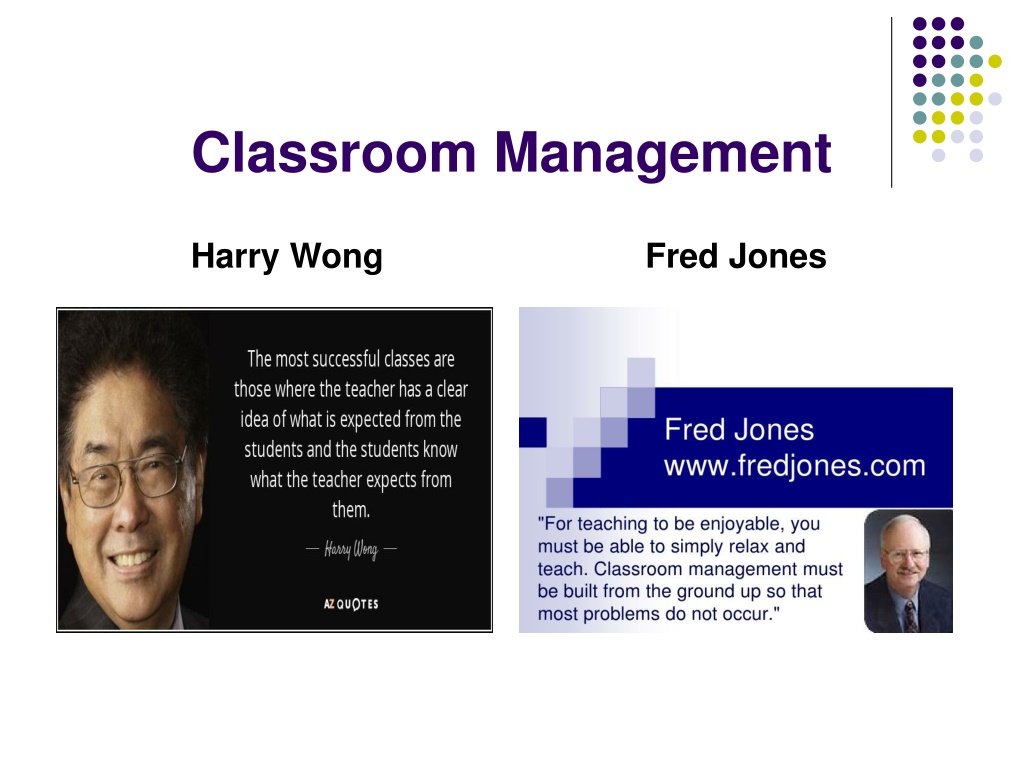



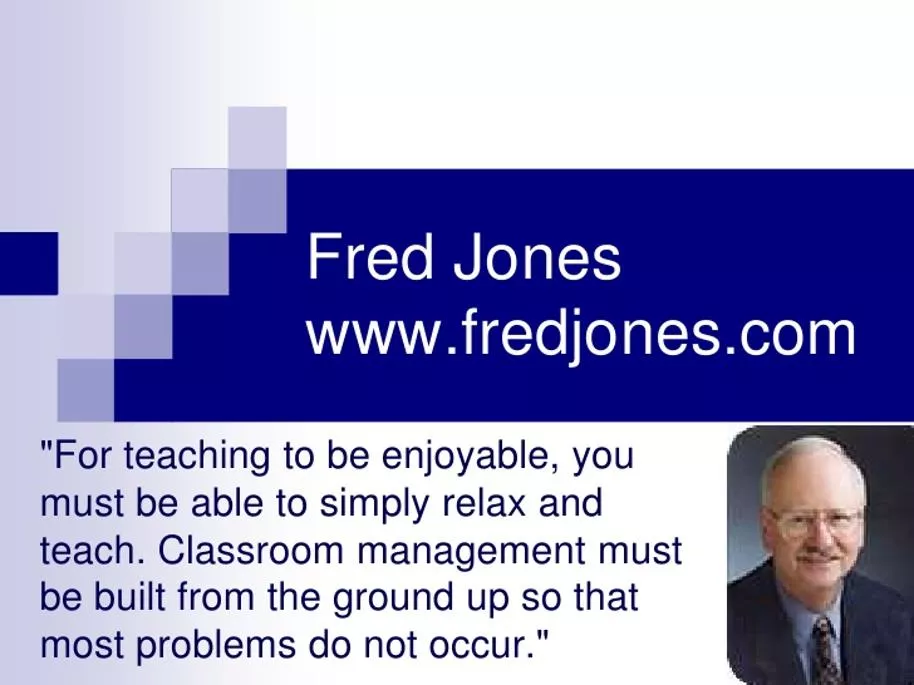
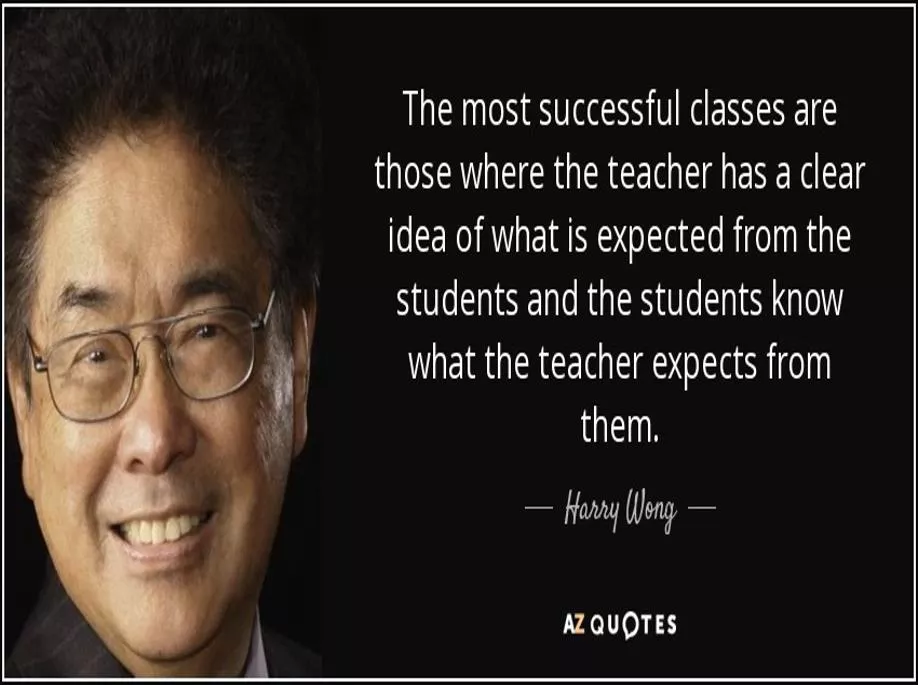
 undefined
undefined





